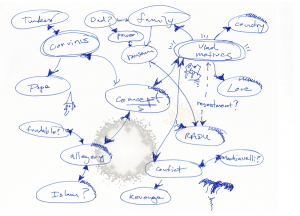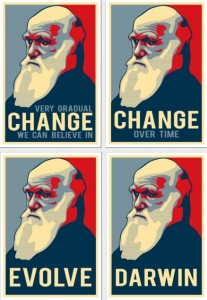 With a brief respite between vacationing in the canyons of Colorado and leaving tomorrow for Australia, I’ve open-sourced an eight-year-old computer program for converting one’s DNA sequences into an artistic rendering. The input to the program are the allelic patterns from standard DNA analysis services that use the Short Tandem Repeat Polymorphisms from forensic analysis, as well as poetry reflecting one’s ethnic heritage. The output is generative art: a tree that overlays the sequences with the poetry and a background rendered from the sequences.
With a brief respite between vacationing in the canyons of Colorado and leaving tomorrow for Australia, I’ve open-sourced an eight-year-old computer program for converting one’s DNA sequences into an artistic rendering. The input to the program are the allelic patterns from standard DNA analysis services that use the Short Tandem Repeat Polymorphisms from forensic analysis, as well as poetry reflecting one’s ethnic heritage. The output is generative art: a tree that overlays the sequences with the poetry and a background rendered from the sequences.
Generative art is perhaps one of the greatest aesthetic achievements of the late 20th Century. Generative art is, fundamentally, a recognition that the core of our humanity can be understood and converted into meaningful aesthetic products–it is the parallel of effective procedures in cognitive science, and developed in lock-step with the constructive efforts to reproduce and simulate human cognition.
To use Tree of Lives, install Java 1.8, unzip the package, and edit the supplied markconfig.txt to enter in your STRs and the allele variant numbers in sequence per line 15 of the configuration file. Lines 16+ are for lines of poetry that will be rendered on the limbs of the tree. Other configuration parameters can be discerned by examining com.treeoflives.CTreeConfig.java, and involve colors, paths, etc. Execute the program with:
java -cp treeoflives.jar:iText-4.2.0-com.itextpdf.jar com.treeoflives.CAlleleRenderer markconfig.txt… Read the rest







